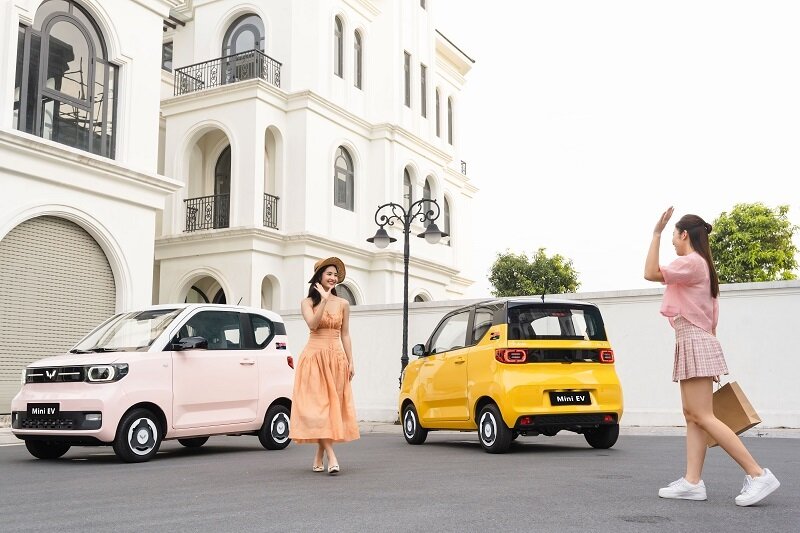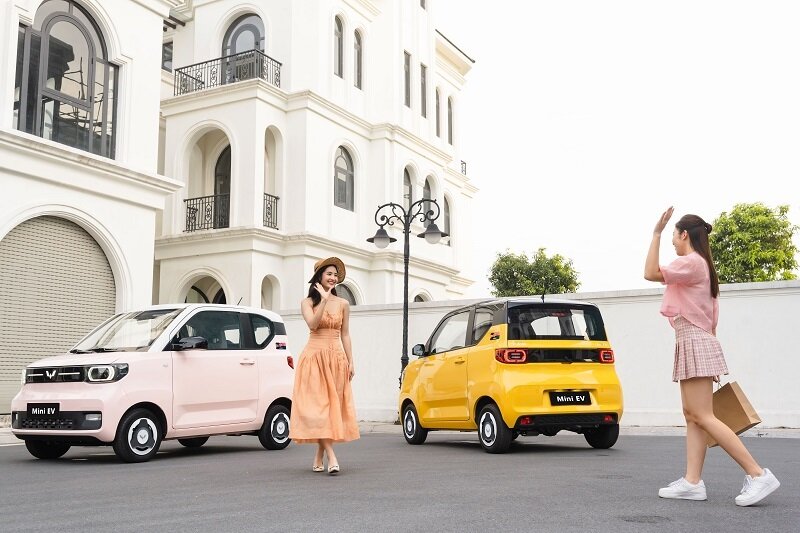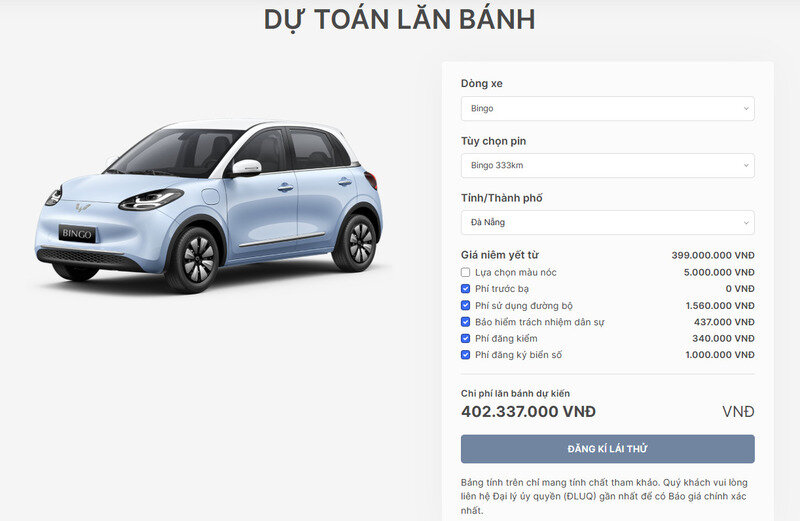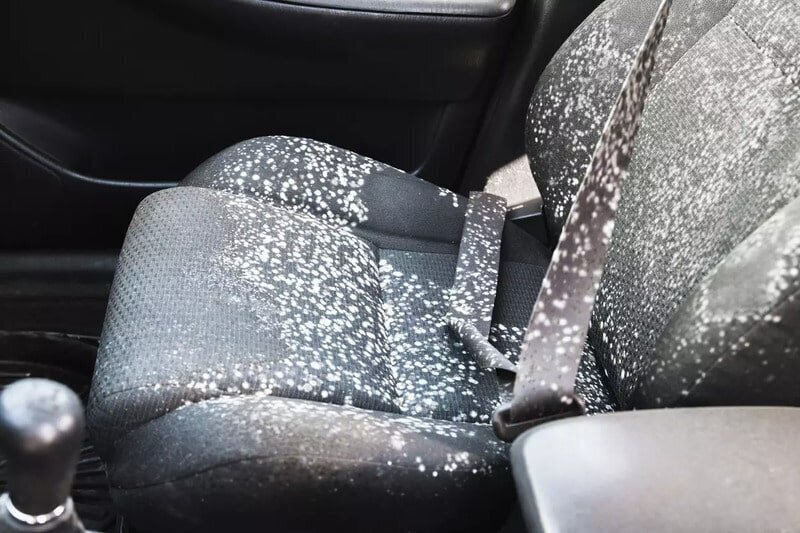Electric car charger is an important device that will help car owners solve all charging problems on the go. This charger is very flexible and easily connects to many different types of electric cars, helping the car always be ready for any journey. So what types of chargers are there? Let's Wuling EV Vietnam See the information below!
1. What is an electric car charger?
Electric car charger This includes components such as the charging port, the vehicle's integrated charger and voltage distributor, and the battery. Below is information about charging port types, times and car charging locations.
1.1. Types of charging ports
Vehicle chargers are classified according to current:
- Slow charging: Uses AC alternating current, with a capacity of 2-45 KW
- Fast Charging: Uses DC current, with capacity of 50 KW or more
Depending on how fast or slow charging is and depending on the country, charging ports are classified as follows:
- Type 1 J1772 charging port: Belongs to charging level 2 with a power source above about 220V - 240V.
- Type 2 Mennekes charging port: Uses 600V- 800V power source for level 3 charging speed. This type of port has a locking mechanism so it ensures safety when used at public charging stations. With a high-voltage power source, electric vehicles can charge from 0 - 80% in about 23 minutes and can operate at 80 - 150 km/h.
- CCS combined charging port: Supports both DC (Direct Current) and AC (Alternating Current) charging with capacities ranging from 50kW to 350kW.
- Chademo charging port: Fast charging speed with 600V - 800V power source from direct current (DC) power source. So after one hour of charging, the car can travel a distance of about 150 km.
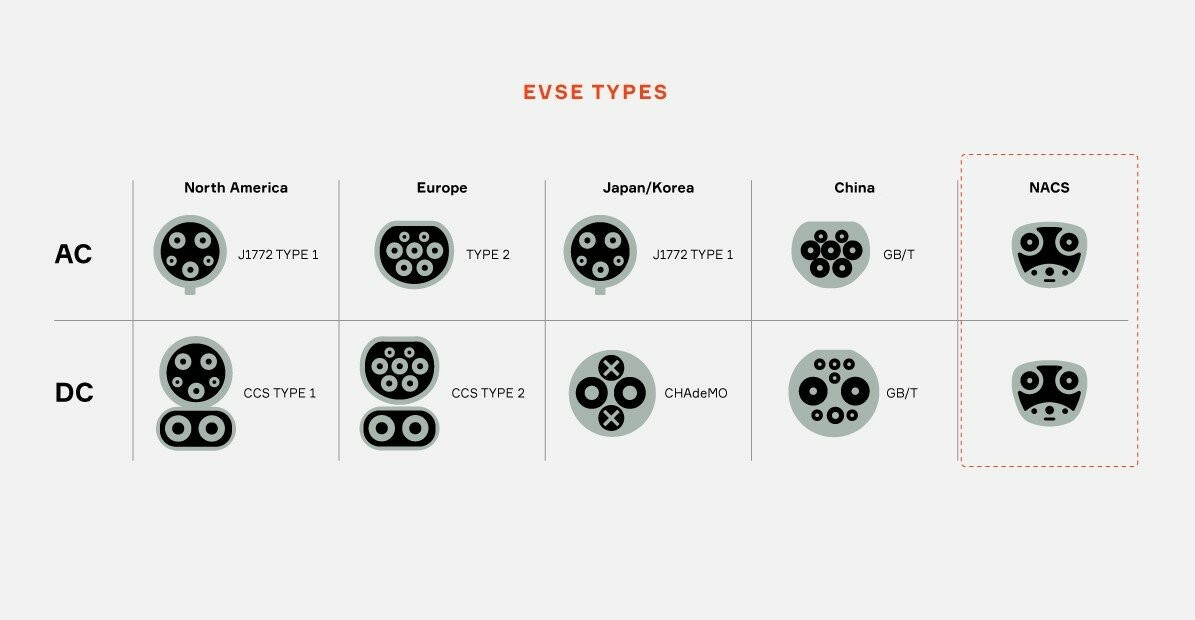
Electric cars have many types of charging ports
1.2. Charging modes
There are charging modes for electric cars as follows
- Mode 1: Mode 1 is a method of connecting an electric vehicle to a standard AC power network (mains) outlet. Current and voltage must not exceed:
- 16 A and 250 V AC, single phase,
- 16 A and 480 V AC, three phase.
- 16 A and 250 V AC, single phase,
- Mode 2: Mode 2 is a method of connecting an electric vehicle to a standard socket of an AC power network, with a system to control the charging process to protect individuals against electric shock. Current and voltage must not exceed:
- 32 A and 250 V single phase AC;
- 32 A and 480 V three-phase AC.
- 32 A and 250 V single phase AC;
- Mode 3: Mode 3 is a method of connecting electric vehicles to power supply equipment permanently connected to the AC power network.
- Mode 4: Mode 4 is a method of connecting an electric vehicle to an AC or DC power supply network using a DC power supply device for the electric vehicle (charging station).
1.3. Electric car battery charging time
Time electric car charger Can be fast or slow depending on power source and vehicle type. The charging process may vary significantly if the charging ports and capacities are different. Vehicles using a fast charging port can charge the battery from 0 to 80% in just a few dozen minutes. Meanwhile, slow charging ports often require longer charging times. This affects charging time and the distance the vehicle can travel per charge.
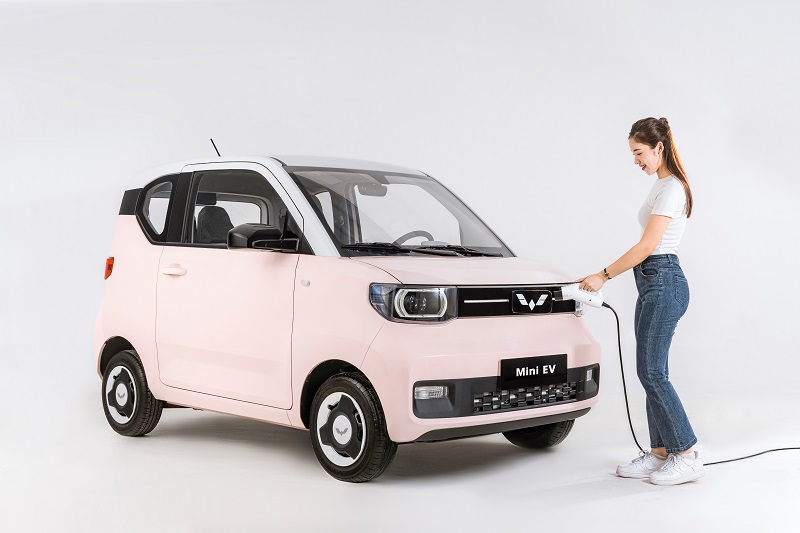
Charging time depends on the type of vehicle the user uses
1.4. Vehicle charging locations
Unlike gasoline cars that can only go to a station to fill the tank, electric cars allow you to charge in more locations. This includes at home, at shopping malls, public charging stations and parking lots. However, the charging station system is very limited because current vehicles are mainly gasoline-powered vehicles.
- Charging at home: Charging electric cars at home is a way to save time and money. Charging at home can use level 1 or level 2 chargers. You can take advantage of night time to charge your vehicle.
- Charging at public stations: Here, level 2 and level 3 chargers are used.In addition to being installed at home, level 2 chargers are also installed in agencies, offices, parking lots, etc. Level 3 chargers can fully charge the battery in 20 - 30 minutes but have a higher usage cost.

You can charge your car at home or at public stations
2. Charging levels for popular electric cars
Speed electric car charge depends on two main factors:Vehicle type (car charging capacity)and power supply connection.Currently there are 3 charging levels including: slow charging, fast charging, super fast charging.
2.1. Charging level level 1 (slow charging).
Level 1 charging is an AC charger for electric vehicles that connects to a standard 120V outlet. This means it is suitable for household sockets used for common electrical appliances. The charging efficiency of this level allows the vehicle to travel about 8km after one hour of charging, and it takes from 12 to 20 hours to fully charge the electric vehicle battery. Electric vehicles used mainly in families will often come with an L1 charging cable. This allows users to plug the charger into any wall outlet.
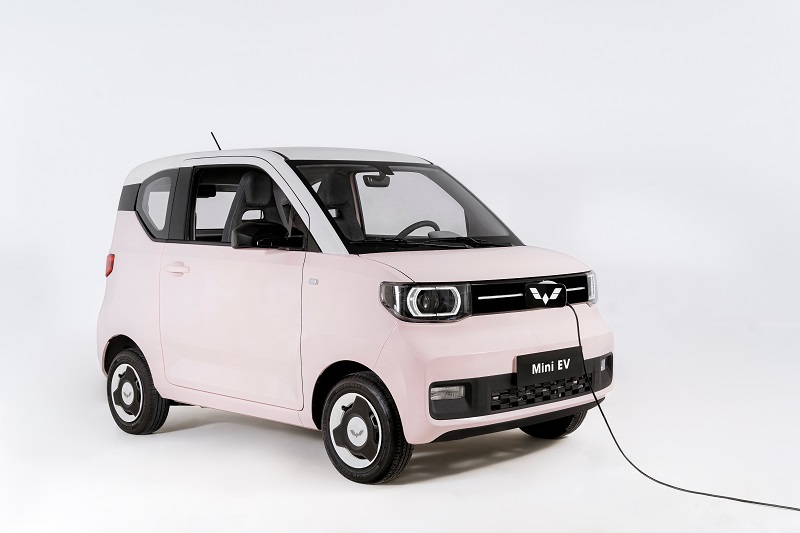
Level 1 charging usually takes about 12 - 20 hours to fully charge the battery
However, the weakness of level 1 is the slow charging speed. On average, per hour of charging, the car only moves about 3 - 8km. Therefore, the L1 charging cable is often only seen as an emergency solution when the car owner forgets to charge the battery before going out. Especially when near an area without a fast charging station, this is a safety measure.
2.2. Charging level 2 (fast charging)
Level 2 charging is also AC charging, connected to a 240V outlet. Level 2 charging can be used at home or at public stations such as parking lots, shopping centers, offices, etc. The charging efficiency of this level allows the vehicle to travel an average of 30km per hour of charging, and it takes about 6 to 14 hours to fully charge the electric vehicle battery. And level 2 charging is usually faster than level 1 because the voltage is twice as high.
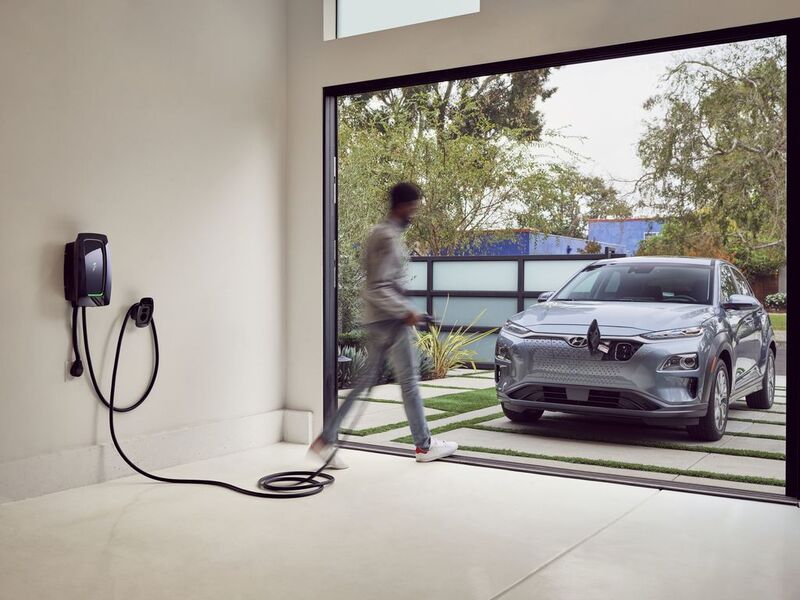
Level 2 charging can be used at home
2.3. Charging level 3
Level 3 chargers are of the DC charging type. The DC charger is used to directly charge the storage battery with an operating voltage of up to 480V. And after about 20 minutes, the battery will be fully charged. This type of charger is mainly used at fast charging stations on highways, rest stops, and shopping centers.
This is considered the fastest charging level currently available for electric cars, requiring a separate power supply with AC current greater than 480V and more than 100A. DC fast chargers can provide about 50-350kW of power, even up to 400kW in some European countries. Therefore, fully charging the battery only takes 15-30 minutes.
3. How to increase the durability of electric car batteries
To increase the durability of electric car batteries, there are several effective methods such as charging properly, avoiding full charging, maintaining a stable temperature, etc. Here are some tips to increase your endurance electric car charger that you should know:
3.1. Should stop at 80% charge level
Currently, most electric cars use lithium-ion batteries. To preserve and increase battery life, you should not charge it to 100% and then use it until it is completely depleted. This will often cause rapid wear and tear and damage the battery after a few years.
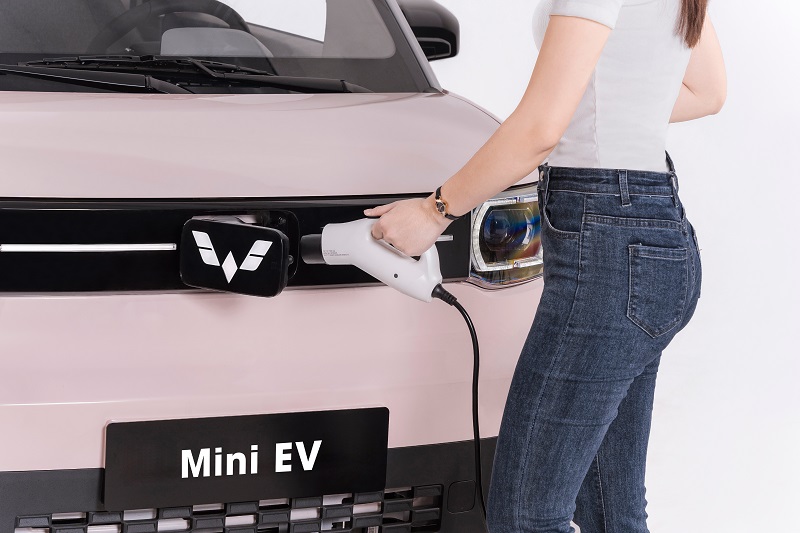
Do not overcharge the vehicle
For best performance and increased battery life, all car manufacturers recommend charging the battery to only about 80% capacity. Between 30-80% of battery capacity is considered the ideal threshold for electric vehicles to perform best and have the longest battery life.
However, maintaining battery status between 30-80% does not need to be too "stressful". In cases like going on a long journey, you can charge the battery to more than 80% or use the battery to less than 30%. However, the most important thing is to limit it regularly to ensure the battery works well.
3.2. Do not charge the battery multiple times a day
Avoid charging your electric car too often just because you're worried about running out of battery in the middle of the road. If not necessary, like when preparing to go away, charge your electric car only once every other day. If you have a charging station at your home, charge your electric car battery every 2 days. In case you rely on public charging stations, plan to charge your battery properly instead of plugging it in everywhere, anytime.
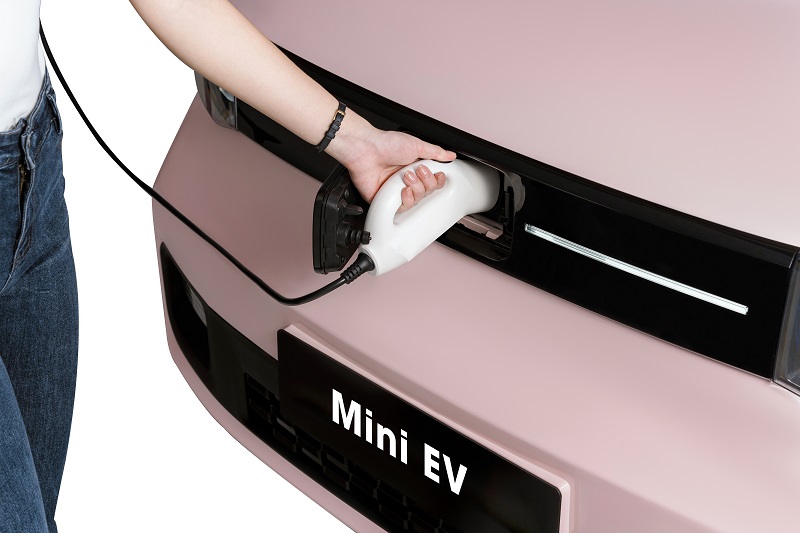
Avoid charging electric cars too many times a day
Not charging the battery too often also has the advantage of increasing energy recovery from braking. When the battery is full or nearly full, the regenerative braking system is switched off to prevent overcharging the battery.
3.3. Do not abuse fast charging
Using DC fast charging is a convenient solution when you need to recharge your electric vehicle mid-ride or when you forget to charge the battery. A typical fast charge only takes about 30 minutes. However, frequent use of fast charging stations may affect battery life and performance. Therefore, you should plan to charge the battery appropriately and limit the use of fast charging to increase battery life.
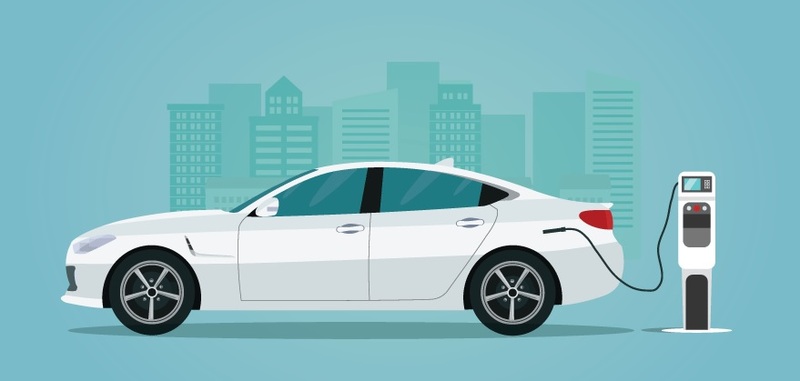
Use fast charging appropriately to protect your vehicle's battery
Electric vehicle manufacturers and experts have calculated that fast charging more than 1-2 times a day can reduce battery capacity by 1% per year. And this is considered high usage. Therefore, you should pay attention to avoid using fast charging too much.
3.4. Let the car rest before plugging in the charger
Electric car batteries are very sensitive to temperature. The ideal condition for the battery to function best is 20-40 degrees Celsius. Therefore, after the electric car has run a long distance, especially in the summer, wait a while for the battery to cool before plugging in the charger. . This helps preserve battery life and performance. Besides, for this reason, you should not leave your electric car plugged in to charge the battery for a long time under the sun to avoid negative effects on the battery due to high temperature.
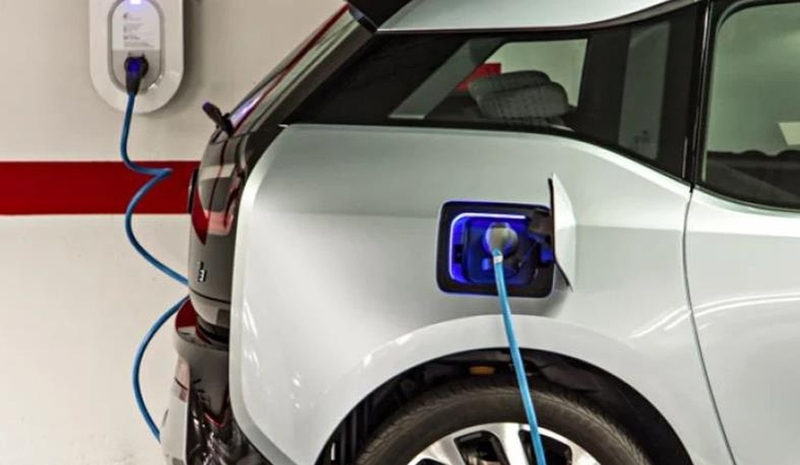
Before charging, make sure the vehicle is in top condition
4. Address to buy reputable electric cars, cheapest price today
Wuling EV Vietnam is a pioneer in opening up the mini electric car segment for people in Vietnam. With a vision of dedication to the development of the electric car industry, Wuling EV Vietnam always strives and strives to bring the best service experience. The enterprise has nearly 40 years of experience in manufacturing, assembling and distributing vehicles.
Wuling has launched the Wuling Mini EV electric car line. This demonstrates the desire that Vietnamese people can easily own environmentally friendly cars at prices within reach. So why bother coming to Wuling EV Vietnam to experience electric cars at extremely reasonable prices?
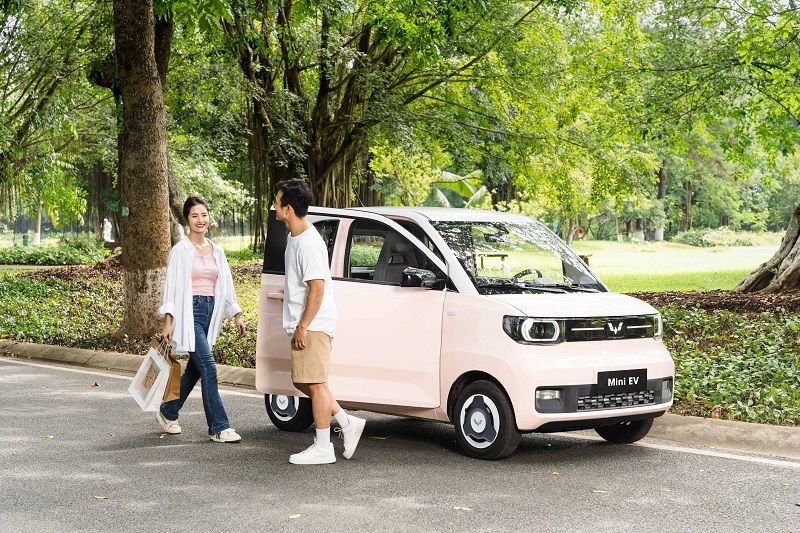
Wuling EV Vietnam provides reputable and quality electric cars
Above is some information about the levels of electric car charger. Hopefully this information can help you in the process of choosing the right charging device. If you have any questions, please contact us Wuling EV Vietnam right away, you will be answered immediately.



